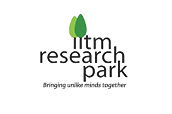Right after independence five autonomous and highly funded IITs were created as “cornerstones in building the industrial, scientific and technological edifice of the nation.” And the IITs did well. By 1970s, they built a strong undergraduate program which could compete with the best in the world. By the 1980s, the IITs had high-quality Masters’ Graduates, who would soon don leadership (CXOs) of industries all over India and they also set the base of the IT industry growth in the country. By 1990s, PhDs from IITs became the leading Faculty in a large number of private engineering colleges in the country, producing about 1 million engineers a year. These young graduates helped India grow its industries post liberalisation. At the same time, IIT Faculty had started publishing quality papers in international journals.
IITs were fast evolving but were not “cornerstones in building the industrial, scientific and technological edifice of the nation,” as Indian industry was still importing most technologies and adapting them for local raw materials. By the turn of the millennium, IITs started thinking about technology development and commercialization, through either industry – academia collaboration or by creating start-ups, wherever industry was not willing to take risks associated with innovative break-through technologies.
Late in the first decade of the 2000s, recognising that Innovation thrives when Faculty, Industry persons and Youngsters interact in both formal as well as informal environments, the IITM Research Park (IITMRP) was founded. The faculty brought in the width of knowledge, whereas Industry came with experience to convert prototypes into products. The Youngsters did not know that “it cannot be done” and were ready to plunge into long hours of work to make the impossible possible. At the same time, recognising that established Indian industry is risk-averse and Start-ups drive Innovation 18 hours a day, the IITM incubation Cell as well as Rural Technology and Business Incubator (RTBI), MedTech and Bio Incubator were created.
Starting with a seed money of about ₹100 Crores, IITMRP borrowed money from the bank to set up a ₹500 Crore infrastructure. It paid back its bank loan and today generates ₹40 Crores cash every year. The incubators have incubated about 245 companies, valued at over ₹11,000 Crore; the incubators own a small part of these shares, making it financially self-dependent. Today, both IITMRP and IITMIC are board-driven companies with prominent Industrialists, a few Faculty members, and some Government Secretaries on its board. They are fully autonomous section 8 companies.
However, the original mission of India is still unachieved. The Industrial, scientific, and technological edifice of the nation is still weak. India is still largely dependent on imported technologies. We are not known to be technology leaders in any field. IITs, its Research Parks and Incubators need to do much more in the 2020s.
IITMRP / IITMIC boards have thus set up some seemingly impossible 10X goals for 2030, which could transform India. The first goal, R&D to Scaled Commercialisation, is to nurture 30 to 50 products for which R&D is carried out primarily in India, for each to have revenues of ₹1000 Crores per year. So far, Indian R&D has rarely translated into such large-scaled commercialisation even though India is a large market. The second goal for IITMRP/IC is to enable 1000 incubations per year (up from 45 incubations per year today). Towards this, they aim to partner with 50 to 100 incubators in tier-2, tier-3 and tier-4 institutes and nurture their incubates to succeed. generic modafinil brands https://www.melbourneosteopathycentre.com.au/ The third goal is focused on nurturing talent. 1 million engineers graduate a year in India, but our industry have very few technologists who are in the top 2% in any area. IITMRP/IC needs to enable its ecosystem to make 500 of them into Ranchos, who would be amongst the top 2% in their field of expertise. The fourth and near impossible goal is to ensure that India is recognised as amongst the top five in the world by 2030 in five areas. There are very few areas where this is true today. One would need to simultaneously work on R&D, Industry, Market and Policy to get there. The first area being pursued is to “get India to move towards 100% Renewable Energy” by 2030. Recently a second area, assistive technologies for differently abled has been selected. The other three areas will be chosen in due course.
A question comes up, can IITMRP/IC achieve these impossible sounding 10X goals by 2030? The answer is that India has no better option. It has the talent and the market size. What is needed is the will. IITMRP and IITMIC are in the best position to drive these goals, leveraging IITM and its associates. It must do it.
The journey started 9 months back. The task was to make the impossible into possible. The boards have not given an option for them to fail. IITMRP has put together a mix of small number of experienced and a lot of youngsters to drive these goals. Inspiration, long hours and hard work has become a norm. There is a lot of energy and excitement in the air, with each day adding to create a path forward. The scaled commercialisation team has identified two products and is already confident to get to ₹1000 Crore revenue for each in the next few years. It is working on four more products which appear today to have the potential. The thousand incubator team has tied up with eight incubators and is driving a program to create excitement amongst the students and have started nurturing their incubates for success. The Rancho team is working with 30 youngsters and their team leaders at IITMRP and reigniting their dreams to become best scientists and technologists. It is creating a unique “Build Labs” to get these youngsters to learn to build prototypes and products. The 100%RE team has made great strides in identifying technologies and strategies to move India towards net-zero and building broad alliances and business models to make it possible. There is a saying, किसी चीज को सिज्जत से चाहो तो सारी कायनात तुमको उस से मिलाने की सजीश में लग जाती है. We are reminded of this every single day. By 2030, IITMRP / IC will get to its 10X goals. What is needed is to align more and more people towards these goals for India.
Ashok Jhunjhunwala
Institute Professor, IIT Madras, India
President, IITM Research Park, IITM Incubation Cell and RTBI
![]()


